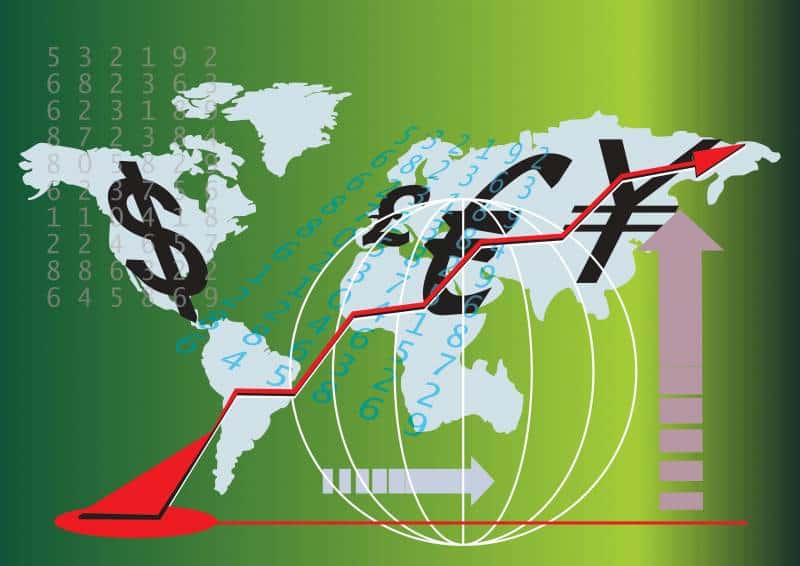Disclaimer – Do your Own Research
Our content is intended to be used and must be used for informational purposes only. It is very important to do your own analysis before making any investment based on your own personal circumstances. You should take independent financial advice from a professional in connection with, or independently research and verify, any information that you find on our website and wish to rely upon, whether for the purpose of making an investment decision or otherwise.
Brexit Overview
On June 24th, 2016, the geopolitical landscape in Europe shifted in such a way that plunged global markets into chaos. The United Kingdom held a referendum on whether or not to leave the European Union (EU), and it was recently announced that the “Leave” movement won with 52% of the national vote, and that the UK will be officially withdrawing from the EU. The referendum turnout was 71.8%, with more than 30 million people voting. It was the highest turnout in a UK-wide vote since the 1992 general election.
Immediate Implications
Despite a 52% win for the ‘Leave’ movement, much of the momentum gained by the ‘Remain’ side was centralized within three strategic areas within the UK, Northern Ireland, Scotland and London. This overwhelming support for ‘Remain,’ in highly populated areas has resulted in much conflict and disarray following the vote result, as protests break out in London and Edinburgh in support of staying within the EU, and the SNPs Nicola Sturgeon has publicly stated that another Scottish Independence Vote is ‘highly likely’ following the vote to leave the EU. This is only the beginning of the inter-UK conflicts that have arisen as a result of the uncertainty, confusion, and narrow victory-margin following the referendum vote. We personally believe that, as a result of this substantial public outcry, legal uncertainty, and heated political debate; the UK will remain within the EU for at least the foreseeable future.
Trading Strategy
In cases of domestic market turmoil, as is being realized in the UK, investors tend to seek out ‘safe havens’ where they can park their assets until the uncertainty passes. While the Brexit issue has wreaked havoc on most European markets, we would suggest that investors research potential investments within North American markets. The S&P 500, Dow Jones Industrial and Toronto Stock Exchange were all directly affected by the Brexit vote result, however, due to geographic distances and differing trade partners; many North American markets remain sheltered from the Brexit impacts, to a much greater extent than their European counterparts.
There is still too much uncertainty surrounding the Brexit vote to make any recommendations regarding European or UK investments, as legal implications and trade negotiations will introduce extensive volatility into the region for the foreseeable future. In turn, the United States represents a ‘safe haven,’ as nobody expects Yellen (US Fed Chair) to raise interest rates anytime in the near future, especially following Brexit. Janet Yellen has already expressed her concerns over Brexit impacts on the markets, and her willingness to take action to stabilize through QE. This atmosphere of continued QE will provide a stable and robust trading platform, through liquidity-backed growth, for European investors to stabilize their assets in the short term, as uncertainty surrounding the exit process eventually dissipates..
Finally, despite the inherent volatility caused by investor speculation, after the Brexit vote, US markets have remained resilient throughout the months leading the vote, signalling that perhaps they were not as concerned with the outcome as other markets. As you can see in the chart below, the Dow Jones Industrial remained resilient in its growth during the months leading up to the referendum. Although this could be a result of investor belief that ‘Remain’ would win, it also signifies that US investors were less concerned with the Brexit outcome than European investors. If this is investor consensus, then this implies a lower correlation between US market performance and UK ‘Brexit’ drama when compared to European markets, making US markets an appealing investment for UK investors.
Sample Strategy: Dow Jones Call Play
One potential strategy that could be employed by European investors is to buy call options on the US Dow Jones Industrial, now that it has depreciated following the initial Brexit news. If you are confident that the recent depreciation was a result of investor overreaction, and that US markets are actually less vulnerable to European geopolitical turmoil than what the market has priced in; call options represent a method of taking advantage of potential growth with limited downside. A call option at 18,000 is a potential candidate, as any major appreciation in the Dow Jones would result in immediate profit, and if it never reached this benchmark the option would simply expire. This implies that the maximum investor downside is the cost of drawing up the option, while the upside is ‘theoretically’ unlimited.
Other Risks
While the United States represents a relative ‘safe-haven’ as Brexit turmoil continues to wreak havoc on European markets, it is not without its own risks. The current US elections are taking place, with Donald Trump taking an unexpected lead. If Hillary Clinton is unable to beat Donald Trump, it is speculated that the United States would be subject to erroneous and reckless leadership which could damage the state of the US economy. If this is the case, the US would no longer represent the stable ‘safe-haven’ investment for European investors which we depicted earlier.





Leave a Reply